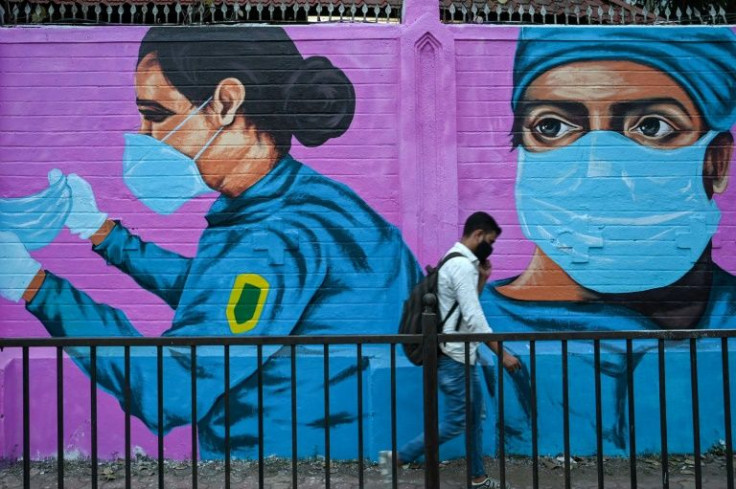India Reports 8.4% Quarterly Growth On Pandemic Recovery
India's economy has recovered to its pre-pandemic size, official data showed Tuesday, boosted by a broad-based recovery in the July-September quarter after a deadly infection surge earlier this year.
Asia's third-largest economy maintained its virus bounceback with 8.4 percent growth in the three months ending September 30, compared to a contraction of 7.4 percent in the same quarter last year.
The country of 1.3 billion was hammered in 2020 by sudden Covid lockdowns that saw most industrial and manufacturing activity grind to a halt for months.

Infections skyrocketed again earlier this year in an outbreak that overwhelmed hospitals and crematoriums.
A recovery in consumption during the recent festive season helped the economy make up some lost ground.
Credit rating agency ICRA's chief economist, Aditi Nayar, said however that "many indicators have displayed a flagging momentum in November 2021, suggesting that the revival in economic growth is yet to become durable".
The economy grew by a record 20.1 percent in the April-June quarter, compared to a contraction of 24.4 percent during India's most stringent virus lockdown last year.

Compared to the previous quarter, India's economy expanded by 10 percent at constant prices, according to an AFP estimate. The government does not release quarter-on-quarter economic data.
The latest figures come as concern grows over the spread of the highly infectious Omicron virus variant, which has weighed on global market sentiment.

"Growth seems to be on the road to 9.1 percent for the full year but a new Covid wave would put that estimate in danger," CARE Ratings chief economist Madan Sabnavis told AFP.
India has yet to detect any cases of the variant, health minister Mansukh Mandaviya told parliament Tuesday.
The World Bank and International Monetary Fund slashed growth forecasts for India earlier this year after the huge Covid-19 outbreak in April and May that killed more than 200,000 people.
The World Bank's most recent India forecast in October predicted 8.3 percent growth for the 2021-22 fiscal year, after a record contraction of 7.3 percent in the previous year.
But some analysts had raised their expectations in recent weeks in the wake of rising consumption and with new virus infections falling.
US-based investment bank Goldman Sachs said earlier this month that India was forecast to grow faster than any other major economy this year and in 2022 and 2023.
The Reserve Bank of India has continued to maintain an accommodative stance on monetary policy to support the economy even as inflation pressures rise.
The central bank is expected to hold key interest rates steady at its meeting next week.
The pace of vaccinations has meanwhile risen steadily in recent months as supply constraints ease. New virus infections fell to their lowest since late May 2020, adding just under 7,000 cases on Tuesday according to the government.
India is the world's second most-infected nation after the United States with more than 34.5 million cases and nearly 470,000 deaths.
Experts warn that the actual toll could be much higher due to underreporting.
© Copyright AFP {{Year}}. All rights reserved.




















